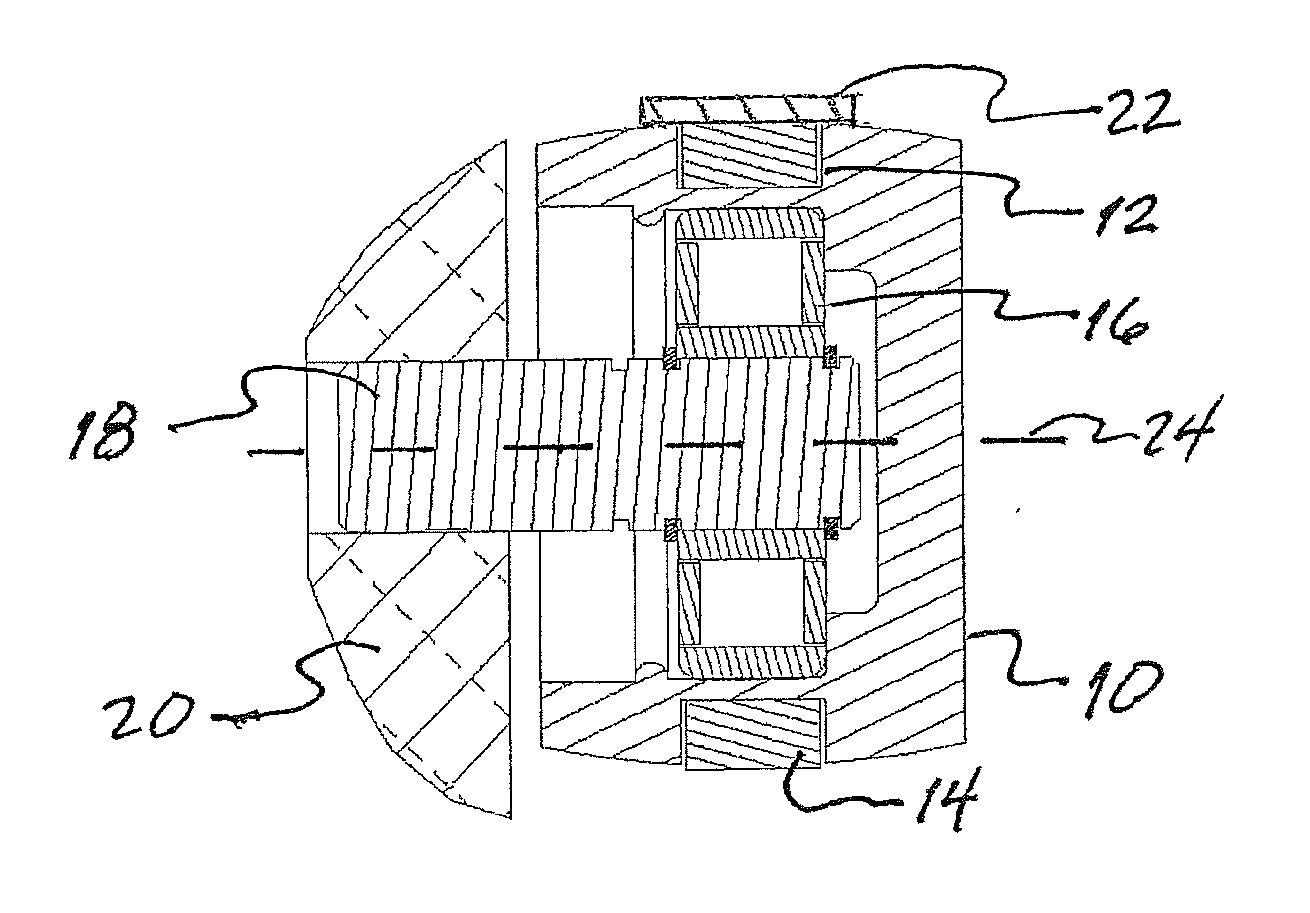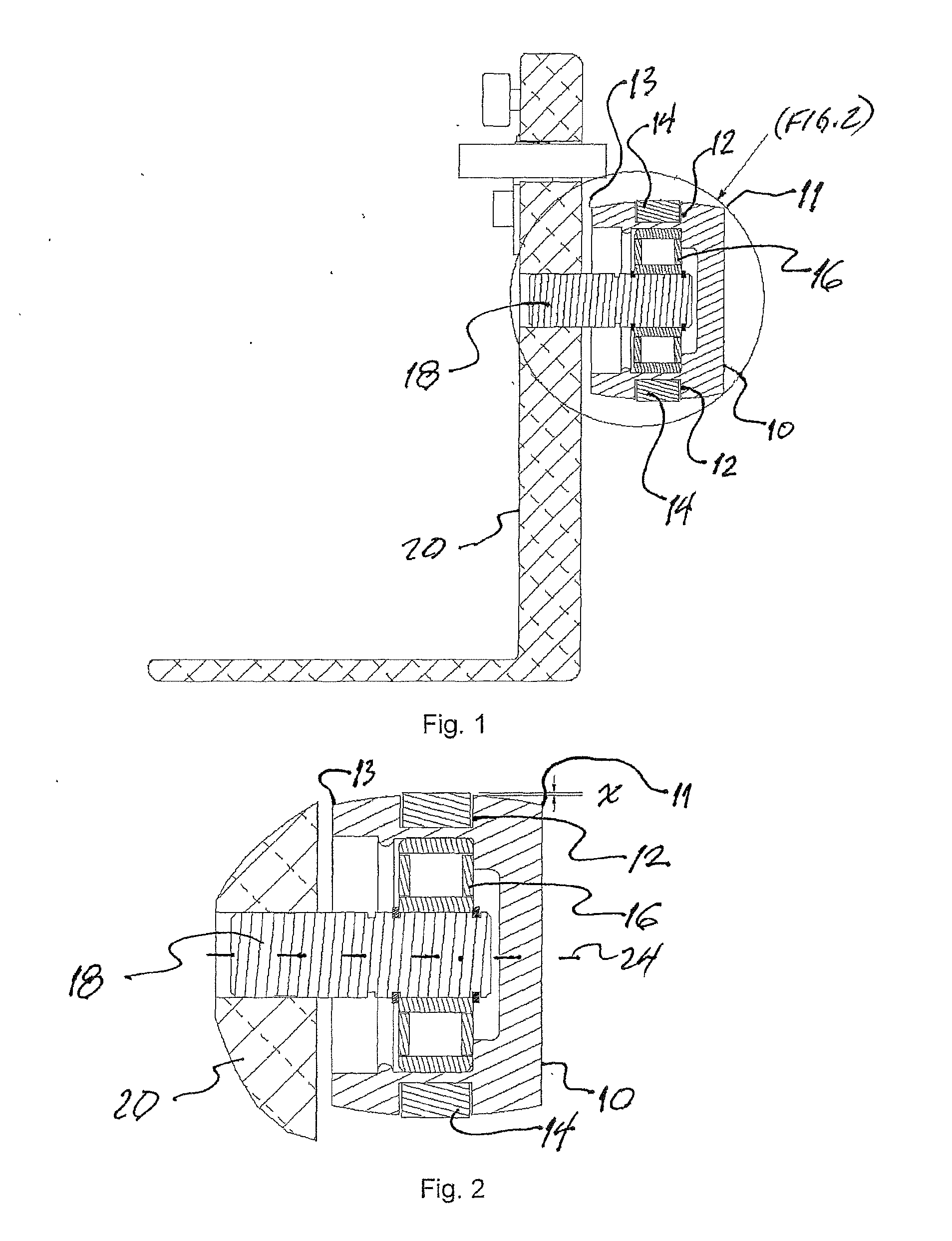High volume conveyor transport for clean environments
- Summary
- Abstract
- Description
- Claims
- Application Information
AI Technical Summary
Benefits of technology
Problems solved by technology
Method used
Image
Examples
Embodiment Construction
[0032]This application claims benefit over U.S. Provisional Application No. 61 / 894,079, filed Oct. 22, 2013, entitled: CONVEYOR SYSTEM PROVIDING REDUCED PARTICULATION.
[0033]FIG. 1 illustrates an idler wheel hub 10 disposed in relation to a supporting rail frame 20. The wheel hub, also simply referred to herein as “the wheel,” may be formed of a hard, resilient material that is resistant to particulation, such as polyurethane. One preferred embodiment of the wheel 10 employs 75 Shore D cast electrostatic discharge (ESD) polyurethane rods that are machined to the desired shape and size after casting. Alternatively, a 67D polyester-type Thermoplastic Polyurethane (TPU) such as ESTANE (™ of Lubrizol Advanced Materials, Inc., Cleveland, Ohio) 58137 TPU. The wheel, in the illustrated embodiment, is substantially cylindrical, though, as can be more clearly seen in FIG. 2, has an outer periphery that is inclined with respect to an axis of symmetry 24 centered within the respective axle 18. ...
PUM
 Login to View More
Login to View More Abstract
Description
Claims
Application Information
 Login to View More
Login to View More - R&D
- Intellectual Property
- Life Sciences
- Materials
- Tech Scout
- Unparalleled Data Quality
- Higher Quality Content
- 60% Fewer Hallucinations
Browse by: Latest US Patents, China's latest patents, Technical Efficacy Thesaurus, Application Domain, Technology Topic, Popular Technical Reports.
© 2025 PatSnap. All rights reserved.Legal|Privacy policy|Modern Slavery Act Transparency Statement|Sitemap|About US| Contact US: help@patsnap.com



